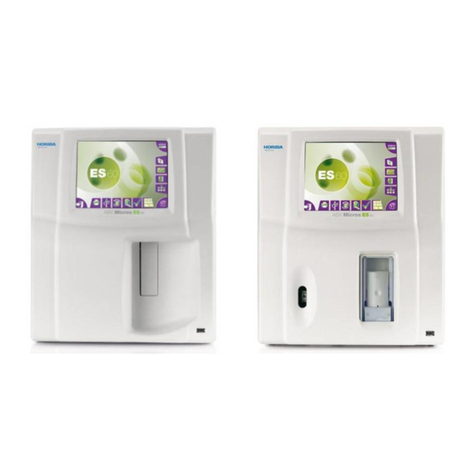
FluoroMax-3 v. 3.1 (3 Mar 2006)
iv
8: Producing Correction Factors ........................................................................... 8-1
Introduction.............................................................................................................................................8-1
Generating emission correction factors..................................................................................................8-2
Calculating emission correction factors..................................................................................................8-3
Calculating excitation correction factors.................................................................................................8-5
Using correction-factor files..................................................................................................................8-10
9: FluoroMax®-P Phosphorimeter Operation ............................................................ 9-1
Introduction.............................................................................................................................................9-1
Theory of operation ................................................................................................................................9-2
Applications for the phosphorimeter.......................................................................................................9-5
Operation of the phosphorimeter............................................................................................................9-8
Processing phosphorimeter data..........................................................................................................9-10
Lamp replacement................................................................................................................................9-11
10: Automated Polarizers..................................................................................10-1
Introduction...........................................................................................................................................10-1
Installation.............................................................................................................................................10-5
Alignment..............................................................................................................................................10-6
Using automated polarizers................................................................................................................10-14
Maintenance.......................................................................................................................................10-19
Troubleshooting..................................................................................................................................10-20
11: Technical Specifications ..............................................................................11-1
Spectrofluorometer system...................................................................................................................11-2
Minimum computer requirements.........................................................................................................11-4
Software................................................................................................................................................11-4
12: Components & Accessories...........................................................................12-1
Itemized list of FluoroMax®-3 accessories ...........................................................................................12-2
Model 1940 Absorption/Transmission Accessory................................................................................12-3
FL-1013 Liquid Nitrogen Dewar Assembly...........................................................................................12-6
Model 1908MOD Scatter Block Assembly ...........................................................................................12-7
Model 1908 Standard Lamp Assembly ................................................................................................12-7
Sample cells .........................................................................................................................................12-8
F-3000 Fiber Optic Mount.....................................................................................................................12-9
Model 1938 Cut-On Filter...................................................................................................................12-10
Model 1939 Cut-On Filter...................................................................................................................12-10
FL-1010 Cut-On Filter Holder.............................................................................................................12-11
FL-1011 Four-Position Thermostatted Cell Holder ............................................................................12-12
FL-1012 Dual-Position Thermostatted Cell Holder ............................................................................12-14
Model 1933 Solid Sample Holder.......................................................................................................12-16
F-3005/6 Autotitration Injector............................................................................................................12-18
Microscope Interface..........................................................................................................................12-19
Model 1905-OFR 150-W Xenon Lamp...............................................................................................12-20
F-3004 Sample Heater/Cooler Peltier Thermocouple Drive ..............................................................12-21
FM-2005 Phosphorimeter upgrade ....................................................................................................12-22
MicroMax 384 Microwell Plate Reader...............................................................................................12-23
Fl-1044 L-Format Polarizer.................................................................................................................12-24
FL-1015 Injector Port..........................................................................................................................12-25
Quantum-Yield accessory ..................................................................................................................12-26
SFA-20/SPEX Stopped-flow accessory .............................................................................................12-27
FM-2013 TCSPC upgrade..................................................................................................................12-28
F-1001/1 Temperature Bath...............................................................................................................12-29
Model TRIG-15/25 External Trigger Accessory .................................................................................12-30
FM-2007 Windows for the FluoroMax®-3 sample compartment ........................................................12-31
13: Glossary .................................................................................................13-1
14: Bibliography ............................................................................................14-1





























